Sunset Strip Billboards
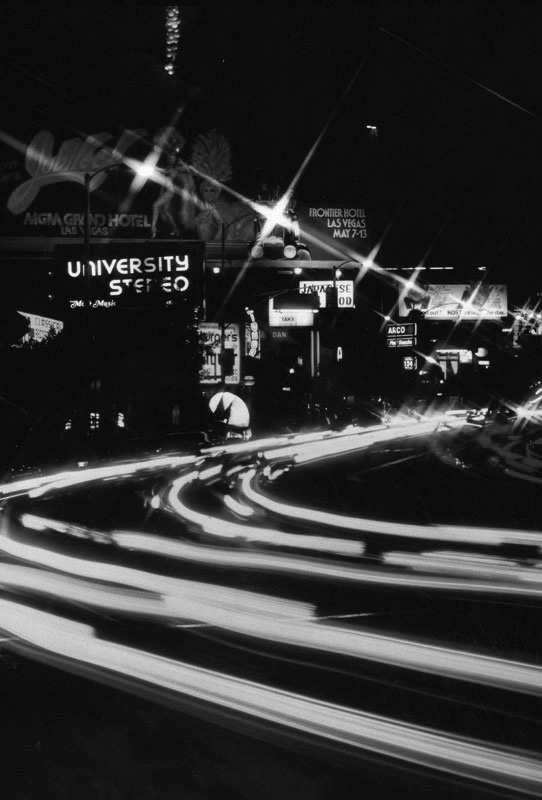 |
|
| (ca. 1980)* - Night view of large billboards along Sunset Strip with automobile headlights creating a neon-like streak. |
Historical Notes The Strip has a long tradition of innovative and memorable signage. In the 1960s and ‘70s making it “big” for musical artists meant a custom-painted billboard on Sunset Strip. |
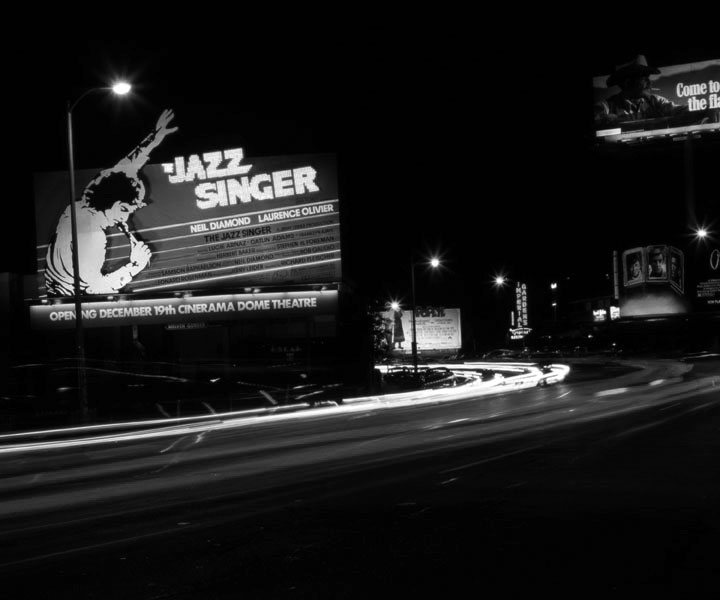 |
|
| (1980)* - View looking west from the northern side of Sunset Boulevard near Chateau Marmont at night. It is a part of the famous "Sunset Strip", the mile and a half stretch of Sunset Boulevard passing through West Hollywood. Large billboards for the "Jazz Singer", "Popeye", "Ordinary People", and Marlboro cigarettes are present on both sides of Sunset Boulevard. Shown in the distance is the yellow neon sign of Imperial Gardens Restaurant, later demolished, located at 8225 Sunset Boulevard. |
Historical Notes In the 1970s, the Sunset Strip became known for its prolific billboard advertising, especially by musicians and record companies promoting new albums, according to Robert Landau’s “Rock ‘n’ Roll Billboards of the Sunset Strip.” |
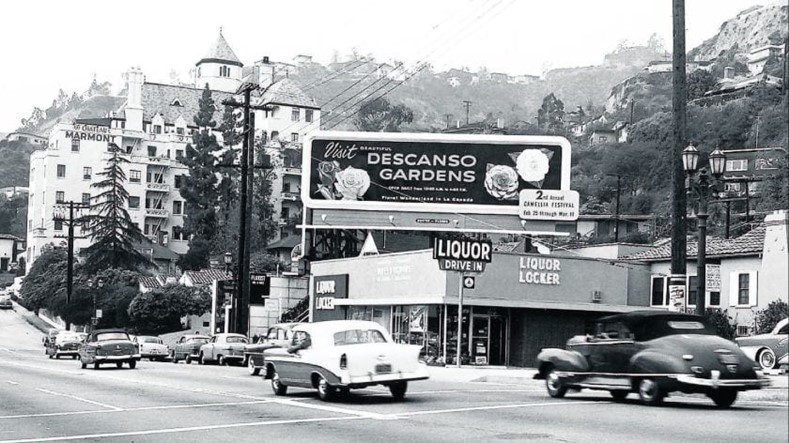 |
|
| (1959)* - Sunset Boulevard and the Chateau Marmont in the background. Note the billboard on top of the Liquor Locker for Descanso Gardens. |
Historical Notes The Strip has a long tradition of innovative and memorable signage. It wasn't until the 1960s and ‘70s that musical artists started to appear "big" along the Sunset Strip. |
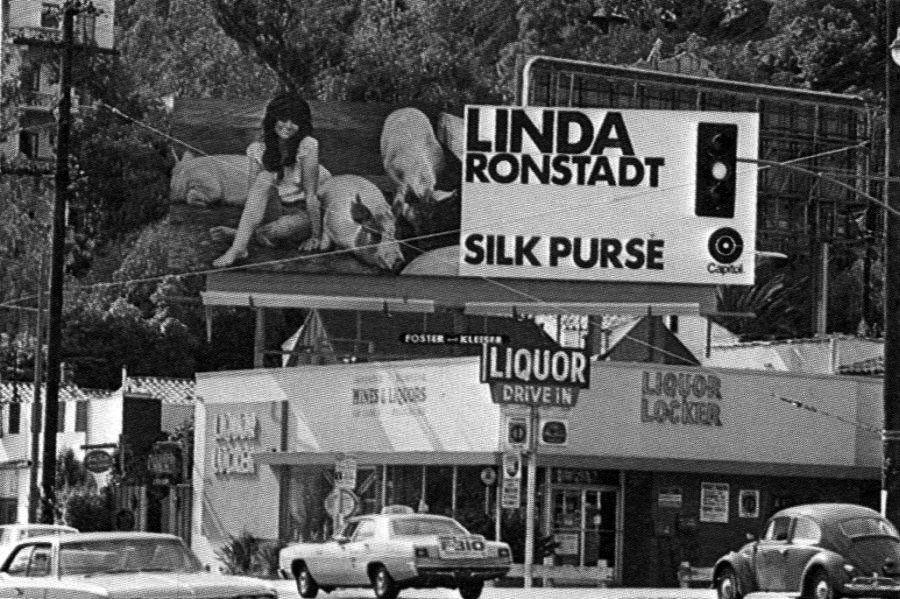 |
|
| (1970)*- Linda Ronstadt billboard atop Liquor Locker at 8161 Sunset on the Sunset Strip. |
Historical Notes Author Andrew Greeley, in his book God in Popular Culture, described Ronstadt as "the most successful and certainly the most durable and most gifted woman Rock singer of her era." Signaling her wide popularity as a concert artist, outside of the singles charts and the recording studio, Dirty Linen magazine describes her as the "first true woman rock 'n' roll superstar ... (selling) out stadiums with a string of mega-successful albums." Amazon.com defines her as the American female rock superstar of the decade. Cashbox gave Ronstadt a Special Decade Award, as the top-selling female singer of the 1970s. By the end of 1978, Ronstadt had solidified her role as one of rock and pop's most successful solo female acts, and owing to her consistent platinum album success, and her ability as the first woman to sell out concerts in arenas and stadiums hosting tens of thousands of fans, Ronstadt became the "highest paid woman in rock". She had six platinum-certified albums, three of which were number 1 on the Billboard album chart, and numerous charted pop singles. In 1978 alone, she made over $12 million (equivalent to $44,000,000 in 2016 dollars) and in the same year her albums sales were reported to be 17 million – grossing over $60 million (equivalent to a gross of over $220,000,000, in 2016 dollars).* |
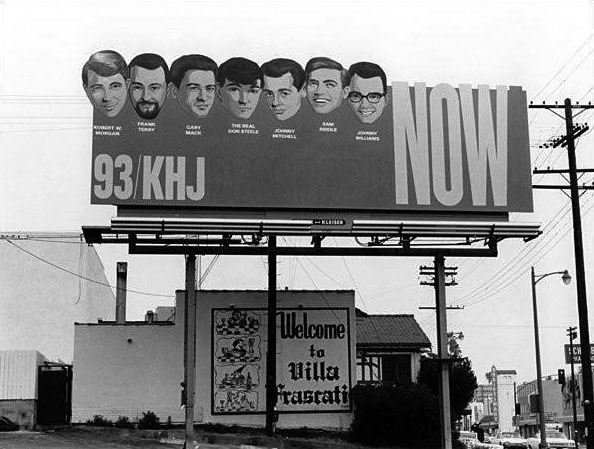 |
|
| (1960s)^ – Billboard advertising the 93/KHJ which helped cultivate a love for rock and roll in the 60’s and 70’s (along with KRLA). The small but popular Villa Frascati Restaurant, 8117 Sunset, is located directly east of the sign. |
Historical Notes KHJ (AM) was a nationally noted Top 40 station from 1965 to 1980. In 1965, programming consultant Bill Drake crafted KHJ's top-40 format. Drake hired program director Ron Jacobs, who had created formats in Hawaii and California. The format featured a restricted playlist and restrained commentary by announcers (although a few, such as Robert W. Morgan, Charlie Tuna, Humble Harve Miller, and The Real Don Steele, were allowed to develop on-air personalities). Other DJs from 1965-68 included Roger Christian, Gary Mack, Dave Diamond, Sam Riddle, Johnny Williams, Frank Terry, Johnny Mitchell, Tommy Vance, Scotty Brink, Steve Clark, Bobby Tripp, Tom Maule and Bill Wade. Part of the format, known as "Boss Radio", were jingles by the Johnny Mann Singers.* |
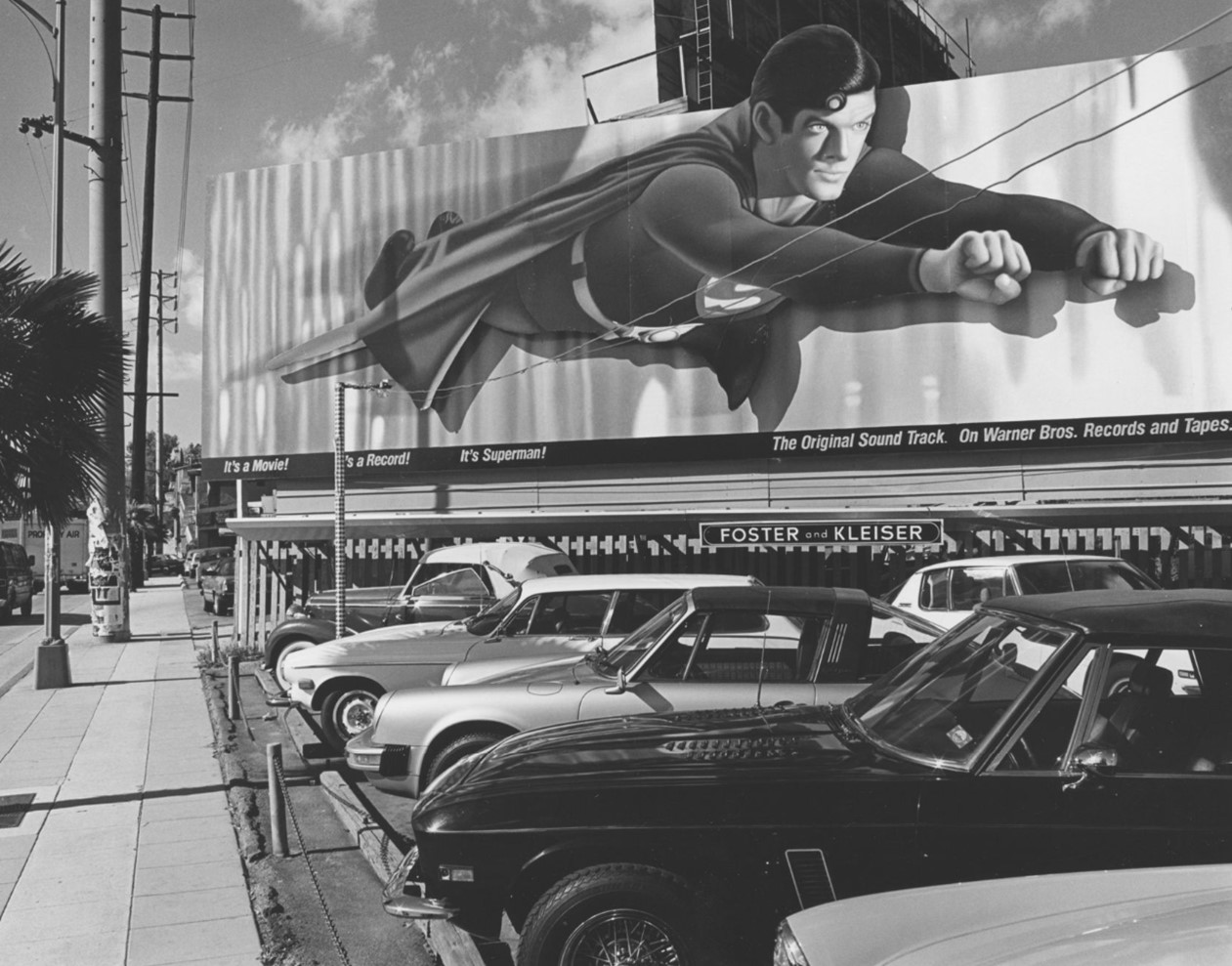 |
|
| (1979)* - View of billboard on Sunset Strip advertising Superman adjacent to parking lot on 8459 Sunset Boulevard. Photo by William Reagh |
Historical Notes Parking lot and billboard are still there. Click HERE for contemporary view. The billboard was advertising the movie Superman II (Released in 1980) starring Christopher Reeve, Gene Hackman, and Margot Kidder. Christopher Reeve's last Superman movie was "Superman IV: The Quest for Peace" released in 1987. It was the final installment of the original Superman film series starring Reeve as the iconic superhero. |
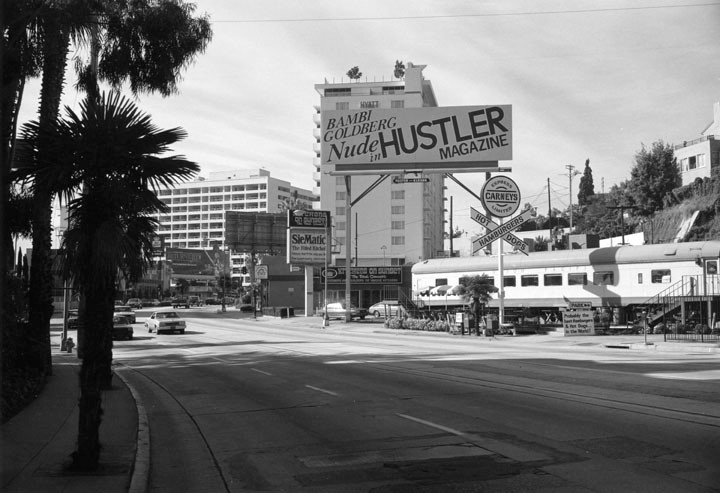 |
|
| (1983)* - A view of Sunset Boulevard showing Carneys Diner, located at 8351 Sunset Blvd with large billboard advertising Hustler Magazine in the background. |
Historical Notes Carneys first opened its doors in 1968. John Wolfe Sr., a local radio executive, decided to build his burger joint from two aging Union Pacific rail cars. Carneys quickly became a landmark on the Sunset Strip, specializing in Hot Dogs and Hamburgers. |
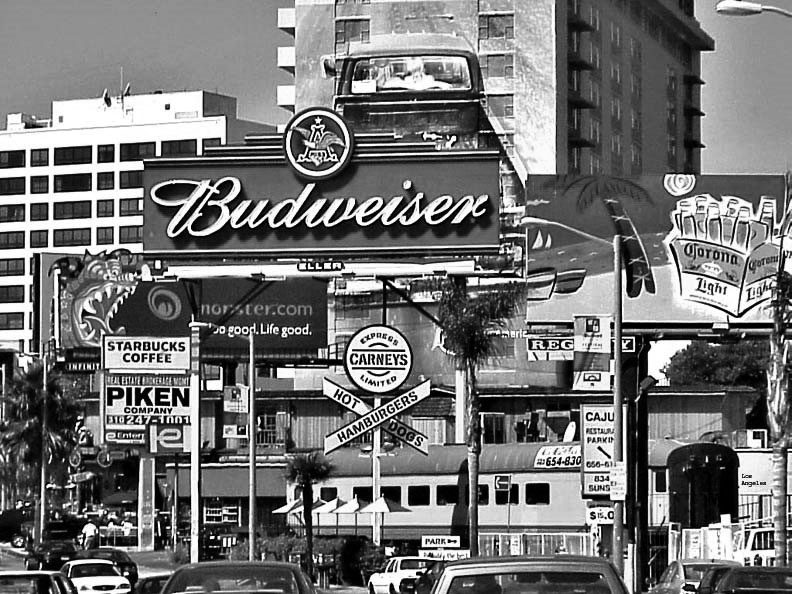 |
|
| (2001)* - A potpourri of billboards surround Carneys Diner on the Sunset Strip in West Hollywood. Photo courtesy of Wikipedia Commons |
* * * * * |
|
Other Sections of Interest |
|
Water and Power in Early LA |
|
Newest Additions |
New Search Index |

A new SEARCH INDEX has been added to help navigate through the thousands of topics and images found in our collection. Try it out for a test run.
Click HERE for Search Index |
* * * * * |
< Back
Menu
- Home
- Mission
- Museum
- Major Efforts
- Recent Newsletters
- Historical Op Ed Pieces
- Board Officers and Directors
- Mulholland/McCarthy Service Awards
- Positions on Owens Valley and the City of Los Angeles Issues
- Legislative Positions on
Water Issues
- Legislative Positions on
Energy Issues
- Membership
- Contact Us
- Search Index
© Copyright Water and Power Associates
Layout by Rocket Website Templates